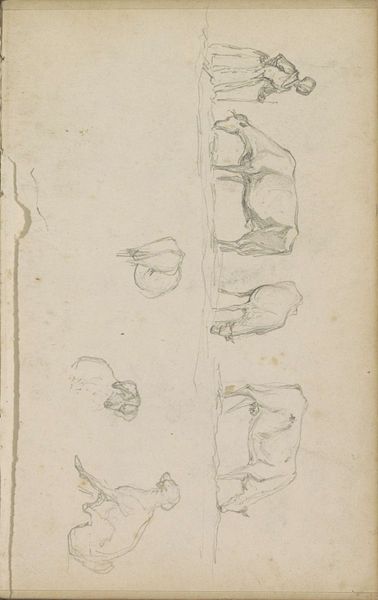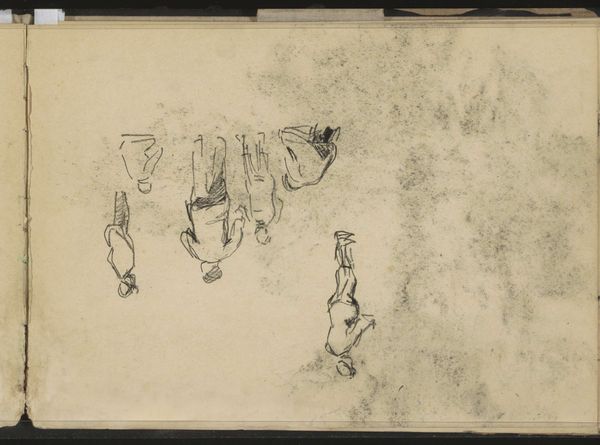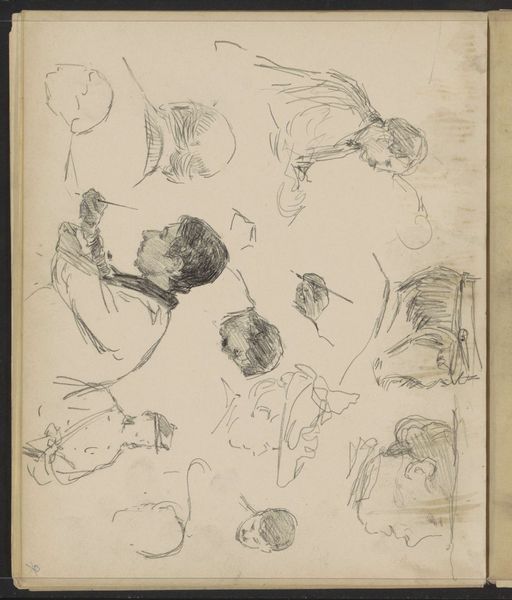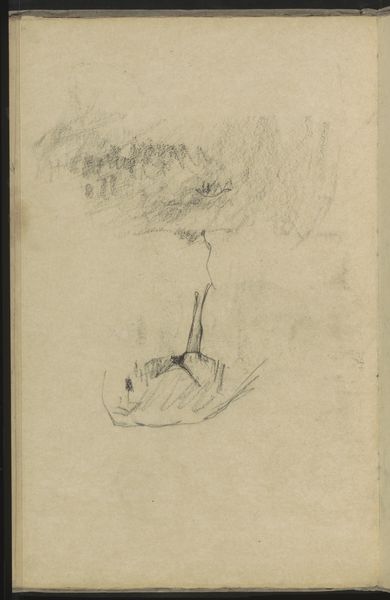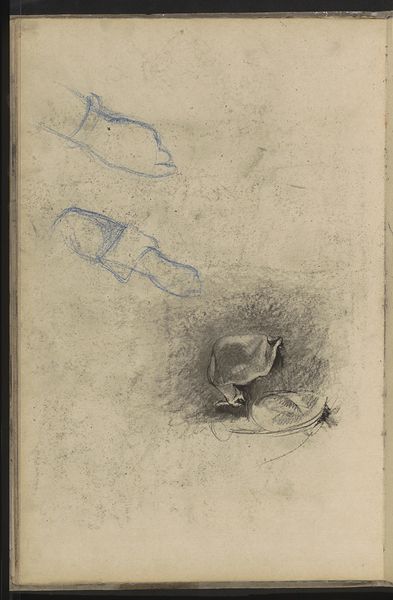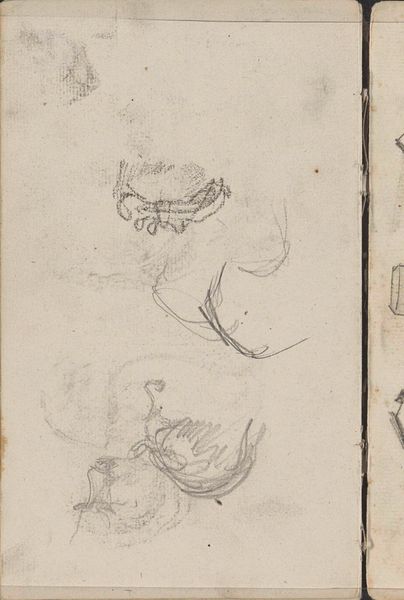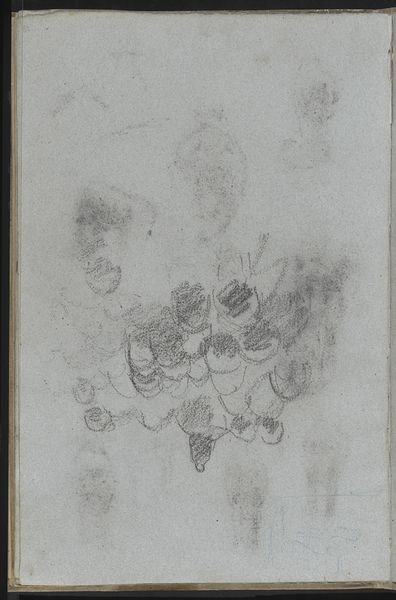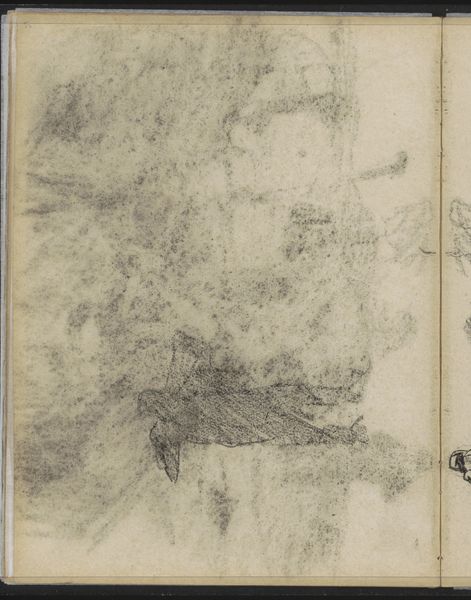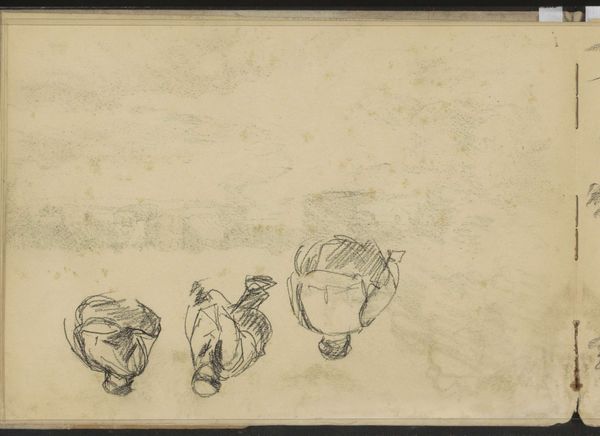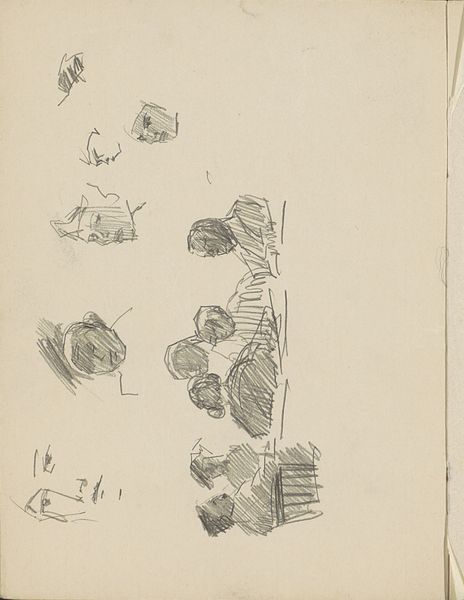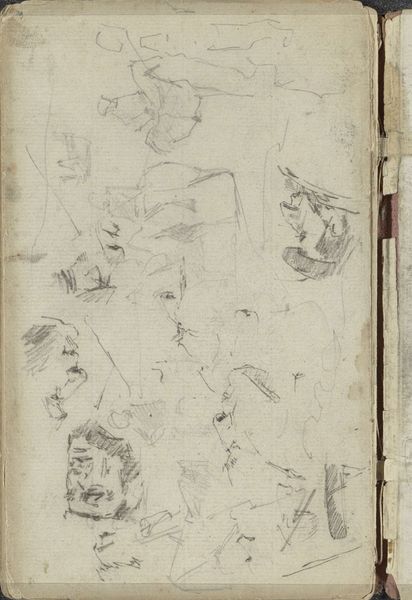
#
amateur sketch
#
light pencil work
#
pen sketch
#
pencil sketch
#
incomplete sketchy
#
personal sketchbook
#
ink drawing experimentation
#
pen-ink sketch
#
sketchbook drawing
#
sketchbook art
Copyright: Rijks Museum: Open Domain
Editor: So, we’re looking at "Studieblad met schapen" by Willem Witsen, created around 1884-1887. It's a pencil and ink sketch from his sketchbook. I'm struck by its informality; it really feels like we're glimpsing the artist's working process. What can you tell me about this piece? Curator: This work offers an intriguing perspective on artistic production. Instead of a finished artwork, we see the raw materiality of art-making. Consider the accessibility of pencil and ink in the late 19th century. These materials were relatively inexpensive, and thus available for personal exploration and the development of artistic skill outside the formal studio setting. How does that inform our understanding of Witsen as an artist and his relationship to his subjects? Editor: That's fascinating. It makes me think about how the readily available materials allowed for a kind of artistic freedom, like he was capturing a fleeting moment without the pressure of a formal piece. Do you see any connection between the subject matter – the sheep – and the materials used? Curator: Absolutely. The seemingly humble materials elevate everyday subject matter. Sheep were important economically, for their wool and meat. By sketching them, Witsen engages with the realities of the agricultural world through a readily available, almost democratic medium. It collapses the perceived hierarchy between high art and the labor it sometimes ignores. Editor: That's a perspective I hadn't considered. Seeing it as a statement about accessible materials connecting the artist to the working world. Curator: Precisely. It invites us to consider the means of artistic production and its broader social context. Editor: This makes me appreciate these preliminary sketches a lot more, thinking of how materials play a role in democratizing art. Curator: Indeed, it blurs the lines and makes us think about art in the context of labor, consumption, and materials available to a common 19th-century person.
Comments
No comments
Be the first to comment and join the conversation on the ultimate creative platform.
